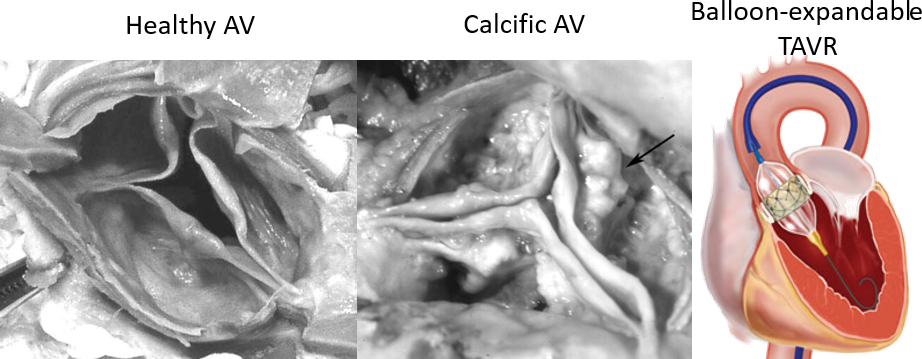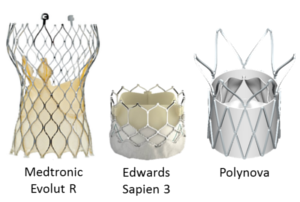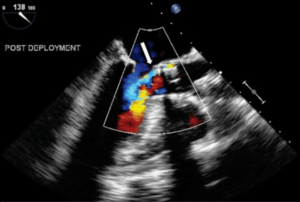- Calcific aortic valve disease is a cardiovascular condition that causes the progressive narrowing of the aortic valve (AV) opening, due to the growth of bone-like deposits all over the aortic root (AR).
- Transcatheter aortic valve replacement (TAVR) is a minimally invasive procedure that has recently become the only lifesaving solution for patients that cannot tolerate the standard surgical valve replacement.
- This technique comprises of a prosthetic valve mounted on a stent and deployed inside the pathologic native valve.

Currently, the commercially available TAVR devices use chemically fixed xenogenic leaflets, whose durability can be compromised by leaflet damage during valve crimping, and its performance affected after the deployment.

Polymeric TAVR Valve Evaluation
Our research group recently adapted the Polynova polymeric surgical valve (Polynova Cardiovascular Inc.*, Stony Brook, NY) design for TAVR procedures.
Our current research aims at evaluating this novel polymeric valve by comparing its crimping mechanics and thrombogenic potential with commercially available TAVR valves. This has been pursued via a Finite Element Analysis to examine the leaflets structural integrity in their crimped configurations, and via a fully coupled Fluid-Structure Interaction (FSI) to investigate their systolic hemodynamics and thrombogenicity.
*Prof. Bluestein has an equity interest in Polynova Cardiovascular Inc.
During and after the procedure clinical complications, such as AR injury, paravalvular leakage (PVL) and migration of the device may occur and lead to surgical failure, due to the presence of calcifications in situ.

Patient-Specific Simulation for surgical planning
Our current research aims at evaluating the effect of different TAVR deployment positions on the device anchorage to the native AR using patient-specific numerical models. This would allow for informing clinicians on the optimal deployment configuration for a specific patient.